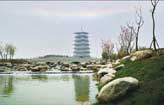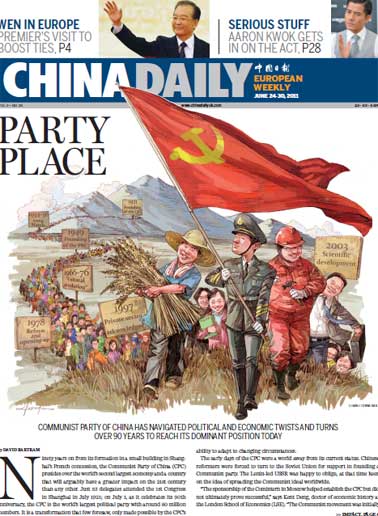Op-Ed Contributors
Firms can learn a lot from CPC
Updated: 2011-06-30 08:12
By He Bolin (China Daily)
Three decades of unprecedented reform has created an economic miracle in China and made it the second largest economy in the world. But many Chinese enterprises, specially the medium- and small-sized ones, are still battling to improve corporate management.
|
||||
The 41-year-old independent research scholar, who graduated from Shanghai University of Finances and Economics and worked for a realty company for a short time, says: "Chinese enterprises should especially learn from the wisdom of the Communist Party of China (CPC.)" The Party has expanded from just more than 50 members in 1921 to 80 million today. It formed a growing army of members and finally founded the People's Republic of China (PRC) in 1949.
Zhou compares today's enterprises with the CPC before 1949 because he sees many similarities between the two. The Party then needed to lay out the correct and clear guiding principles, while enterprises today need to devise a correct, clear and practicable strategy. The CPC had to unite its members and army's strength and infuse in them the will to fight and succeed. Similarly, companies today need to maneuver their staff and encourage them to give vent to their creativity.
Before 1949, the CPC needed to expand the Red Army and its base areas, just like companies have to explore and gain larger shares of market today. If before 1949, the CPC needed to establish its image as the vanguard of the people, enterprises today need to mold their image and brand.
There are more similarities between the pre-1949 CPC and today's enterprises, Zhou says. The Party established the most successful management system in China's modern history. From 1921 to 1949, it had increased its members from 50-plus to about 4.5 million and expanded its army from less than 1,000 in Jinggang Mountain, Jiangxi province, in 1927 to about 4 million after winning the War of Liberation in 1949.
Three periods in the CPC's journey, from its inception to 1949 when it defeated the Kuomintang Army and founded the PRC, could correspond with the three business periods of an enterprise. The Jinggang Mountain period (1927-1929), Yan'an period (1935-1948) and the War of Liberation (1947-1949) correspond with the startup, base-cementing and rapid expansion periods of an enterprise, Zhou says.
To deal with dispirited troops, death of soldiers, and poor land and supply during the Party's Jinggang Mountain period, Mao Zedong adopted a series of measures including setting up Party branches in the Red Army, strengthening Party discipline and redistributing land among farmers. Chinese enterprises should learn from those measures to make more efforts to get brand recognition and to foster a culture of belonging among their employees, just as the CPC did to establish a system of administration, finance, medical care and education.
In Yan'an, Shaanxi province, the CPC faced several difficulties, including shortage of supplies, barren land and military threat from the Kuomintang Army as well as the Japanese invaders. What helped the Party overcome those challenges is innovative management, Zhou says.
E-paper

Shining through
Chinese fireworks overcome cloudy times, pin hopes on burgeoning domestic demand
Pen mightier than the sword
Stroke of luck
Romance by the sea
Specials

90th anniversary of the CPC
The Party has been leading the country and people to prosperity.

My China story
Foreign readers are invited to share your China stories.

Green makeover
Cleanup of Xi'an wasteland pays off for ancient city




